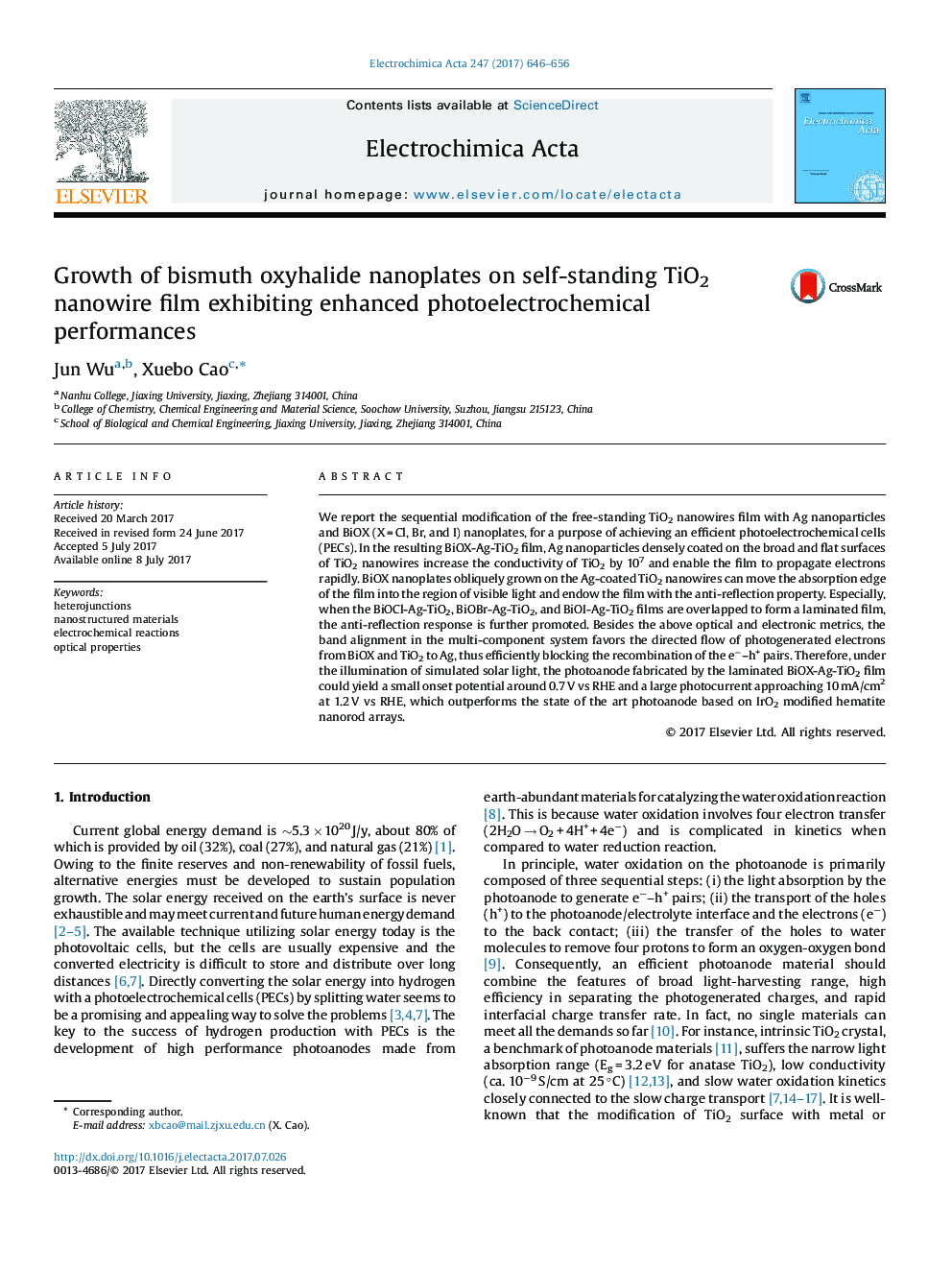| Article ID | Journal | Published Year | Pages | File Type |
|---|---|---|---|---|
| 6471068 | Electrochimica Acta | 2017 | 11 Pages |
We report the sequential modification of the free-standing TiO2 nanowires film with Ag nanoparticles and BiOX (XÂ =Â Cl, Br, and I) nanoplates, for a purpose of achieving an efficient photoelectrochemical cells (PECs). In the resulting BiOX-Ag-TiO2 film, Ag nanoparticles densely coated on the broad and flat surfaces of TiO2 nanowires increase the conductivity of TiO2 by 107 and enable the film to propagate electrons rapidly. BiOX nanoplates obliquely grown on the Ag-coated TiO2 nanowires can move the absorption edge of the film into the region of visible light and endow the film with the anti-reflection property. Especially, when the BiOCl-Ag-TiO2, BiOBr-Ag-TiO2, and BiOI-Ag-TiO2 films are overlapped to form a laminated film, the anti-reflection response is further promoted. Besides the above optical and electronic metrics, the band alignment in the multi-component system favors the directed flow of photogenerated electrons from BiOX and TiO2 to Ag, thus efficiently blocking the recombination of the eâ-h+ pairs. Therefore, under the illumination of simulated solar light, the photoanode fabricated by the laminated BiOX-Ag-TiO2 film could yield a small onset potential around 0.7Â V vs RHE and a large photocurrent approaching 10Â mA/cm2 at 1.2Â V vs RHE, which outperforms the state of the art photoanode based on IrO2 modified hematite nanorod arrays.
